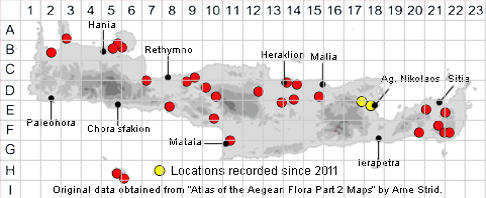
SPECIES DESCRIPTION
CARTHAMUS CAERULEUS
Family:- COMPOSITAE
Common Name:- Blue thistle, Carduncellus
Synonyms:- Carduncellus caeruleus, Carthamodes coeruleum,
Kentrophyllum coeruleum, Lamottea caerulea, Onobroma caeruleum.
Meaning:- Carthamus. From Hebrew for painted one.
Caeruleus (L) Dark sky-blue.
General description:- A medium, hairy perennial.
Stem:-
1) (15-)30-60 cm, simple, rarely branched, with variable lanate-arachnoid
indumentum, sometimes glabrescent.
Leaves:-
1) Basal and cauline, shiny, simple, dentate, or pinnatisect to lyrate with 6-10 pairs
of lobes or teeth, the margin and apex spiny.
2) Upper cauline,ovate-lanceolate.
Flowers:-
1) Capitula, solitary, 20-30 mm, surrounded by leaf-like outer flower-bracts.
2) Involucral bracts, with short glands; more or less arachnoid-hairy.
3) Inner flower-bracts often shorter, with a membranous, rounded appendage.
4) Florets all tubular, deeply 5-lobed.
Fruit:-
1) Achenes, c. 6 mm, more or less obpyramidal, inconspicuously angled, narrowed
from the middle to the base, rugose towards the apex.
2) Pappus-scales, ciliate, whitish, 1½-2 times as long as the achene, free.
Habitat:- Dry grassland, fallow fields, road embankments, olive groves. 0-600 m.
Distribution:- Scattered in coastal areas of west Greece. Mainly C & W
Mediterranean eastward to Karpathos. Limited distribution on Crete.
Flowering time:- Late April to early June.
Photos by:- Steve Lenton
